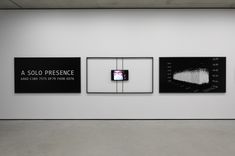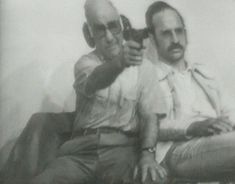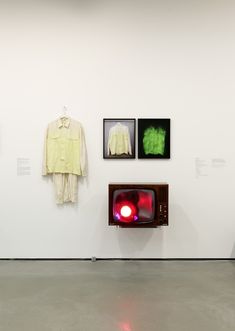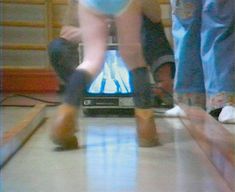Richard Kriesche
Richard Kriesche was born in Vienna in 1940. From 1958 to 1963 he studied at the Academy of Fine Arts, graphic design with Max Melcher and art history at the University of Vienna. From 1963 to 1967 and 1969 to 1990 he taught at the Höhere Technische Bundeslehranstalt in Graz. From 1967 to 1968 he was an assistant at the University (then College) of Applied Arts in Vienna. The foundation of the art association "pool" (1968-76), for which Richard Kriesche published the art magazine "pfirsich" together with Horst Gerhard Haberl and Karl Neubacher, was followed in 1973 by that of the media gallery "poolerie". In 1975 Kriesche became artistic and media pedagogical director of the newly founded AVZ (Audiovisual Center) in Graz. In 1976 he founded the "Audiovisual Media" department at the Höhere Technische Lehranstalt, the first school-based training course for "new media" in Austria. From 1988 to 1991 he held a teaching position at the Vienna University of Technology. In 1991 Kriesche followed the call of the Hochschule für Gestaltung Offenbach, where he was entrusted with the establishment of the teaching department Theory and Practice of Electronic Image Generation. In 1995-96 he took over a guest professorship at the École des beaux Arts - Paris. In 1996 he became deputy head of the science department at the Office of the Styrian Provincial Government, where he moved to the culture department in 1998. From 2003 to 2005 Kriesche worked at the Landesmuseum Joanneum Graz.
The artist received research grants from University College London, Slade in 1971-72, a DAAD grant for a one-year working stay in Berlin in 1983-84, for the "Washington Project for the Arts" in Washington in 1984, and in 1985-86 he completed a research stay ("artist in residence") at the Massachusetts Institute of Technology (MIT) in Cambridge, USA.
Richard Kriesche has participated in numerous major international exhibitions, including Documenta 6 (1977) and Documenta 8 (1987) in Kassel, Ars Electronica in Linz (1989 and 1994), and the 34th (1968), 42nd (1986), and 46th (1995) Biennale di Venezia in Venice, Italy.
The artist is the recipient of numerous awards. In 1988 he received the Art Prize of the City of Graz, in 1995 the Recognition Prize of the Province of Styria for Fine Arts. In 2006 he received the Austrian Cross of Honor for Science and Art, in 2010 the Austrian Art Prize for Media Art, in 2010 "featured artist" of the ars electronica, in 2019 the Decoration of Honor of the Province of Styria for Science, Research and Art, in 2007 he was awarded the Austrian Cross of Honor for Art and Science. Richard Kriesche lives and works in Graz.
Kriesche is considered to be one of the pioneers of video art in Austria, with an accent on the analysis of the social power structures inherent in technologies. Kriesche takes a critical approach to the social contexts of the media. In his "Videodemonstration", in "Peeling Off," and in his performance piece "Kunst ist Erstellen von Kunst" (1972), and likewise in "Malerei deckt zu Kunst deckt auf" (1977), he pointed out the technical features of the medium. In "Blackout" (1974), an action happening staged during a television discussion, he attempted to demonstrate the power of the medium by keeping the camera focused on his black eye-patch. His criticism of television as a mass media is also expressed in actions such as "TV-Tod" (1974/1975/2000), where he confronted reality with its representation in the media. The social component of his media works is especially clear in works such as "14 min im Leben von..." (1977) and "Videotherapie" (1979). (Monika Vykoukal)
read more read less







